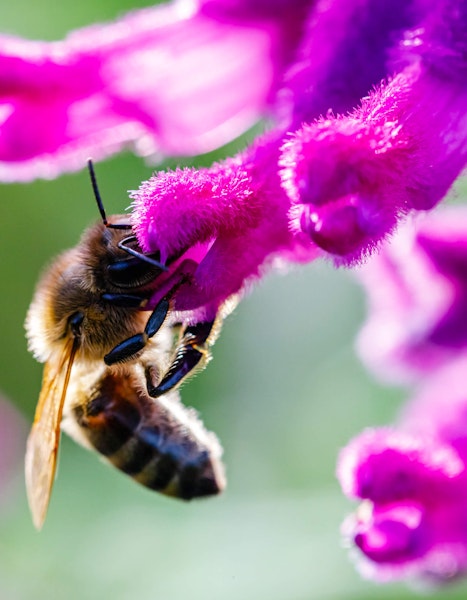California Natives
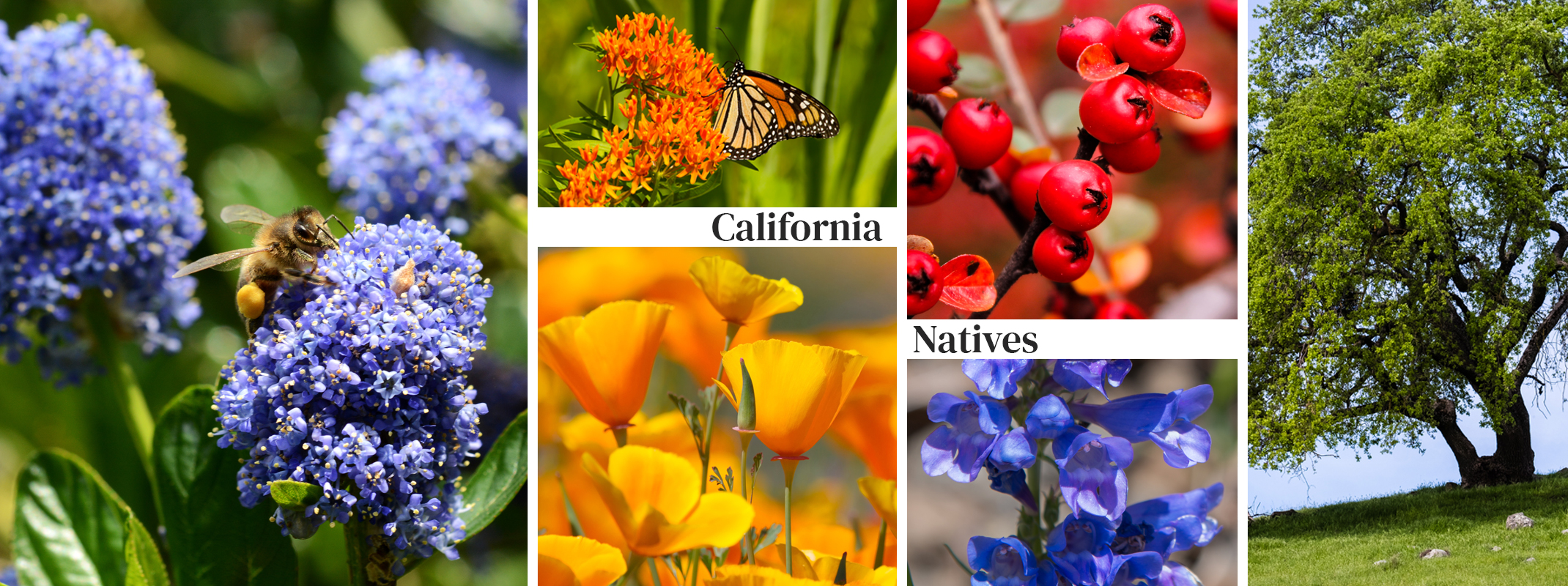
Attractive, Beneficial, Tolerant - Go Native!
- What are Native Plants?
- What are the benefits of Native Plants?
- Natives come in all shapes and sizes - Check out some of our favorites
- Caring for your California Natives
What are Native Plants?
Native plants are those plants that grew here prior to European contact. California's native plants evolved over a very long period, and are the plants Californians first knew and depended on for their livelihood. These plants have co-evolved with animals, fungi and microbes, to form a complex network of relationships. Native plants do the best job of providing food and shelter for native wild animals. They are the foundation of our native ecosystems, or natural communities.
What are the benefits of Native Plants?
Native vegetation evolved to live with the local climate, soil types, and animals. This long process brings us several gardening advantages.
- Water Savings - Once established, many native plants need minimal irrigation beyond normal rainfall.
- Little to Low maintenance - landscaping methods are a natural fit with native plants that are already adapted to the local environment. Look forward to using less water, little to no fertilizer, little to no pesticides, less pruning, and less of your time.
- No Pesticide Use - Native plants have developed their own defenses against many pests and diseases. Since most pesticides kill indiscriminately, beneficial insects become secondary targets in the fight against pests. Reducing or eliminating pesticide use lets natural pest control take over and keeps garden toxins out of our creeks and watersheds.
- Wildlife Viewing - Native plants, birds, butterflies, beneficial insects, and interesting critters are “made for each other.” Research shows that native wildlife prefers native plants.
- Support of Local Ecology - As development replaces natural habitats, planting gardens, parks, and roadsides with California natives can provide a “bridge” to nearby remaining wild-lands.
California Natives - Some of our Favorites:
Our selection of California Natives are impressive this time of year. Their innate beauty will make a lovely addition to your California Landscape. Here are a few of our favorites. And for more information, please visit with our trusted advisors at your local SummerWinds Nursery. Please note that varieties may vary by time of year and by location.
Native Trees

- Western Redbud Cercis occidentalis: One of the many native trees that are beautiful in every season. In the early spring, it is covered with bright rose-purple blossoms and heart-shaped leaves in vibrant to blue green colors. Then in summer, long seedpods ripen. Fall brings excellent color that will eventually fade exposing silvery-gray branches in the winter. The Western Redbud prefers partial to full sun and will grow 15’ wide x 15’ tall.

- Desert Willow Chilopsis linearis: A slender-twigged tree that can grow to 15’ to 40’ tall. Deciduous in nature, it offers exotic looking blossoms of pink or purple with white, yellow or purple streaks in the throat. The violet-scented flowers are replaced by seedpods in early fall. The Desert Willow is a rapid grower and very easy to maintain.
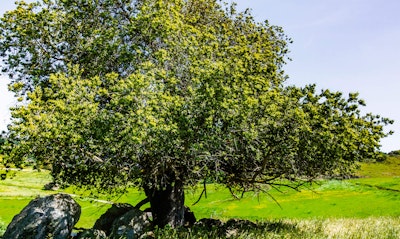
- Coast Live Oak Quercus agrifolia: One of the only California native oaks that actually thrives in the coastal environment. Typically found in well-drained soils along coastal hills and plains, this low maintenance oak prefers to be deeply watered once a week for the first year and then once a month every year after. Once their roots reach wetter areas, they grow rapidly and stay healthy looking all year round. Coast Live Oaks prefer to have their roots shaded, so it's a good idea to surround it when it is young with mulch, rock or other native plants that won’t crowd but provide some shade. The best mulch is a thick layer of oak leaves. Don't fertilize oaks – they'll amend the soil over time with their own leaves, gradually improving the health of the nearby plants.
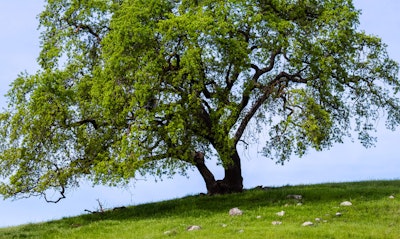
- Valley Oak Quercus lobata: If you’re looking for rather large, native shade tree, look to a Valley Oak. It grows quickly, reaching 20’ tall in 5 years, and up to 60’ tall in just 20 years. Valley Oak trees can ultimately live as long as 600 years and grow to 100’ tall. With a sturdy trunk and bark that looks very much like alligator hide, it offers a softer side with velvety like fuzz covering its leaves. And when one of those leaves are rubbed or broken, it evokes a forest odor with its aromatic scent.
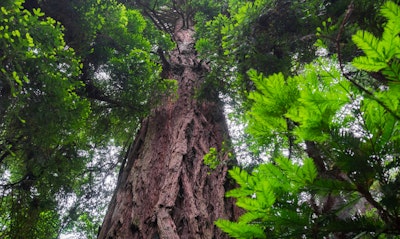
- Coast Redwood Sequoia sempervirens: Also called the California redwood, is the tallest living thing in the world. These massive and majestic trees get their name from the color of its bark. The high tannin content of the wood gives the trees remarkable resistance to fungus, diseases, and insect infestations, reasons why redwood lumber is so desirable.
Shrubs, Perennials and Groundcovers
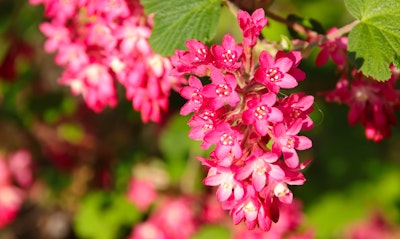
- Redflower Currant Ribes sanguineum: Offers fast growing beautiful long pink flowers that attract hummingbirds and native bees. Hosts long miniature clusters of currents. Can grow 8’ wide x8’ tall.
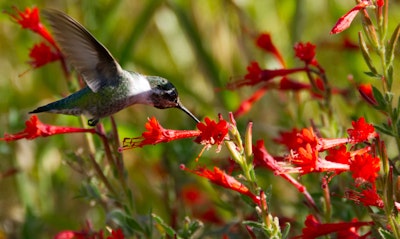
- California Fuchsia or Zauschneria Epilobium canum: Spreads with little water and it is the best hummingbird attractor. It has electric orange tubular flowers that can be seen from far away.
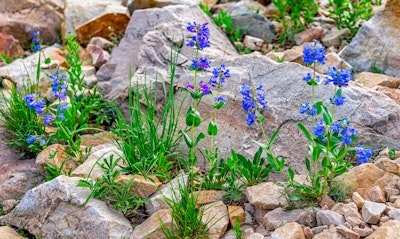
- Penstemon eatonii, heterophyllus and spectabilis and 'Margarita BOP'. These beauties will brighten your landscape with electrifying blue/purple flowers that attract our local bees and hummingbirds. It grows 1’ x 3’.
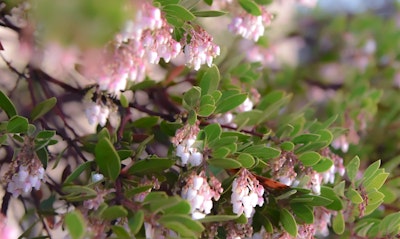
- Manzanita Arctostaphylos: Come in many, many varieties and live long lives up to 100 plus years. Manzanita’s bloom in the late winter and feed the native bees and hummingbirds. Many species can be a beautiful focal point in a garden. The birds enjoy the berries.
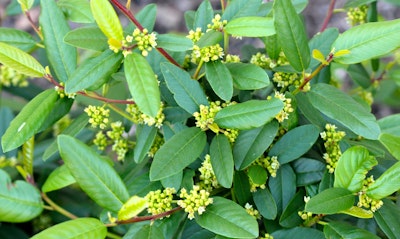
- California Coffeeberry Rhamnus californica: A good foundation plant, its environmental uses are as a host plant for the swallowtail butterfly and others. The nectar from these plants support our beneficial insects, and the showy berries feed larger birds. The California Coffeeberry is a nitrogen fixing plant that grows 6’ wide by 6’ tall.

- Milkweed Asclepias (fascicularis or speciosa): These are our local milkweeds, which are well known for being a host plant for the monarch butterflies. The bees go crazy for it as well and when it blooms in the summer the rich nectar is a great source for beneficial insects and other butterflies too. There is a Curassavica variety that is from Mexico. The monarch butterflies are attracted to it but because it doesn’t lose its leaves in the winter, the monarch butterflies may not leave and can get hit by mites.
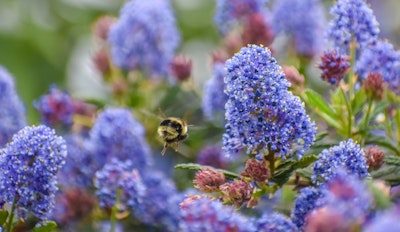
- Wild Lilac Ceanothus: Comes in many varieties. This generous plant comes in many shades of blues and violets spring that attracts many varieties of bees making it the perfect plant to plant near your fruit trees. It is a nitrogen fixing plant and a host plant for many butterflies. It also produces seeds for the small songbirds.
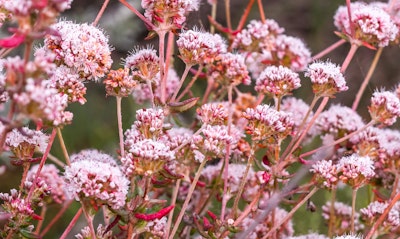
- Buckwheat Eriogonum (fasciculatum): While many varieties exist, this is our local buckwheat. The buckwheats are a host plant for butterflies and a high nectar source for bees and butterflies.
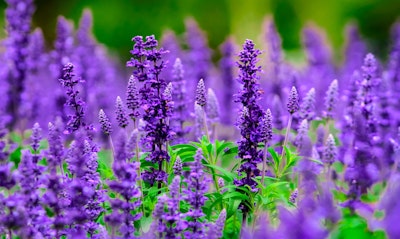
- Salvias apiana, 'Bee's Bliss' clevelandii, sonomensis, spathacea: Offer lovely fragrance when brushed against. Their blue lavender whirls of flowers are irresistible to all bees, hummingbirds, butterflies and seeds for songbirds. These low maintenance plants require very little water and simply need to be cut back in the fall. You'll find these and a host of other Salvia's not commercially grown at SummerWinds.
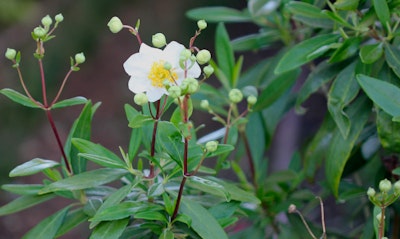
- Bush Anenome Carpenteria californica: An evergreen shrub that tolerates sun to shade and prefers to simply left alone. It is refined with moderate neglect but needs some water if your rainfall is less than 20 inches per year. It will grow to 6' by 3' in the garden.
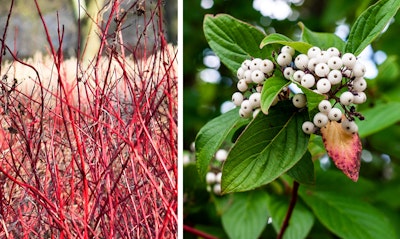
- Red Twig Dogwood Cornus sericea: Displays beautiful coral-red branches on a multi-stemmed shrub. Its blooms are yellowish white that are followed by small blue berries. The bare stems of this deciduous shrub become an attractive accent in the winter. Prefers partial to full sun and is a moderate grower, reaching 9 ft. tall to 5 ft. wide.
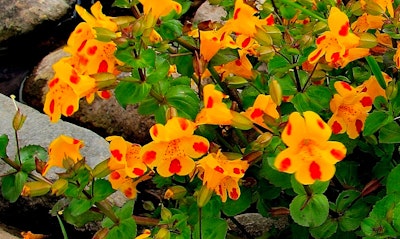
- Monkey Flower Diplacus/Mimulus: These plants are named for their funny-face-flowers that look like smiling Monkeys. There are other varieties of monkey flower but the plants that are in the Genus Diplacus like dry rocky slopes and can be found growing in almost solid rock with very little moisture even on south facing slopes. They will often survive drought by going summer deciduous. Diplacus species are erect and woody in their growth habit. Monkey flowers are more floriferous in full sun but will tolerate part or even full shade.
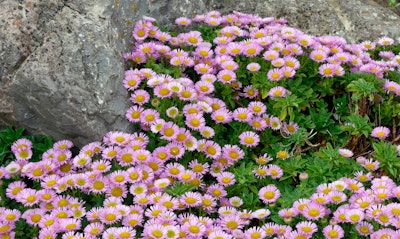
- Seaside Daisy Erigeron glaucus: This evergreen perennial offers a bright yellow center surrounded by icy blue, daisy-like petals and glossy, grayish-green foliage. Seaside daisies are low-growing plants that reach heights of 6 to 10 inches, with a spread of 1 to 2 feet.
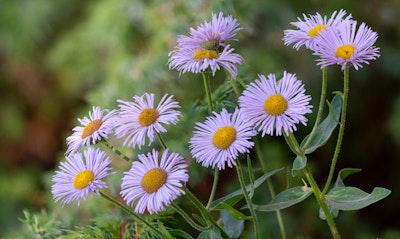
- Wayne Roderick Daisy Erigeron 'WR': More heat tolerant than the Erigeron glaucus variety, this evergreen perennial has large lavender-blue flowers. It is great for attracting bees & butterflies to the garden and tolerates heavy clay soil. It grows 1’ tall by 2’ wide foliage clumps in the winter to spring. Prefers partial to full sun.
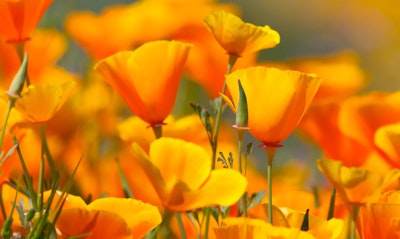
- California Poppy Eschscholzia californica: This iconic plant has fern like foliage and bright bursts of orange, red and yellow flowers. This drought tolerant beauty prefers full sun and is a perfect addition to containers, rock gardens and mixed beds. It grows up to 12” tall and wide.
Grasses
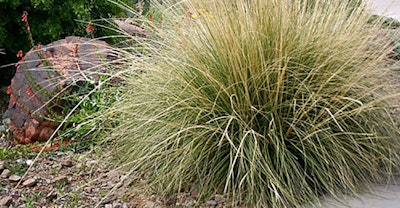
- Deer Grass Muhlenbergia rigens: Can live 75 – 100 years and will maintain its green bunch in winter. Tall flower spikes bloom in late spring and will hold on till winter. Summer color of the grass is part golden and part green.
- Fescue
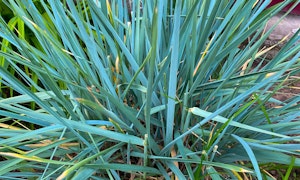
- California Fescue Festuca californica: Grows in greenish gray tufts and is a cross between Deer Grass and needle Grass. This grass compliments deer grass and looks great planted just above it. It is extremely versatile and will grow with some additional moisture.
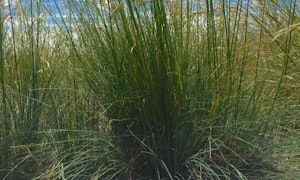
- Idaho Fescue Festuca idahoensis: Idaho Fescue or Blue bunchgrass is native to North America and can be found anywhere from shady forests to open plains grasslands. This densely clumping perennial has stems that reach 12 to 30 inches in height. The flower cluster has hairy spikes which produce large fruits.
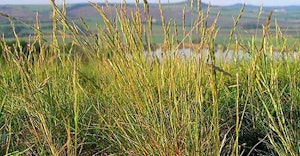
- Western Fescue Festuca occidentalis: Short-lived, this perennial bunchgrass matures at heights around 3 feet tall. Slow to establish, it is used for wildlife habitat restoration. Drought and shade tolerant, it requires little moisture to grow.
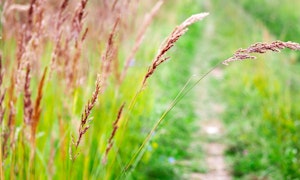
- Red Fescue Festuca rubra: This perennial grass has fine emerald green blades and requires moist soil until it’s established. However, once established the deep root system makes it resistant to wear and drought.
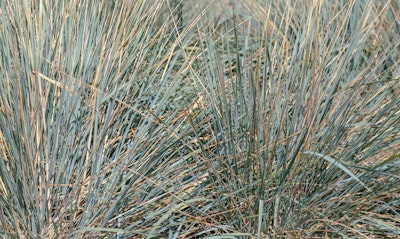
- Giant Ryegrass Leymus condensatus: Elymus condensatus (syn. Leymus condensatus): Stays green all year long and grows in clumps. The extraordinary silver blue foliage spreads but not rapidly and can be easily contained.
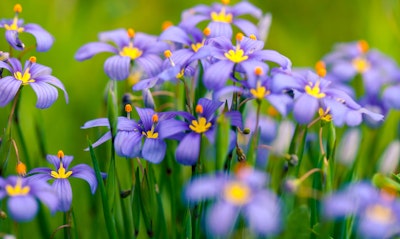
- Blue Eyed Grass Sisyrinchium bellum: This super cute perennial is perfect for borders, tucked in and around rocks or at the edge of ponds. It has petite violet-blue clusters of flowers on short dark green stalks. Blue Eyed Grass forms a gentle spreading, yet compact clump. Prefers partial shade to full sun and reaches 12 to 18 inches tall and wide.
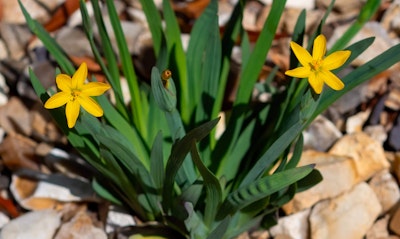
- Yellow-Eyed Grass Sisyrinchium californicum: This evergreen Yellow-Eyed Grass, is a small perennial about 8 inches tall that forms a little clump of iris leaves with bunches of yellow flowers that appear May through June. Yellow-Eyed Grass likes moist areas, but will become drought tolerant in a conventional garden.
Ferns
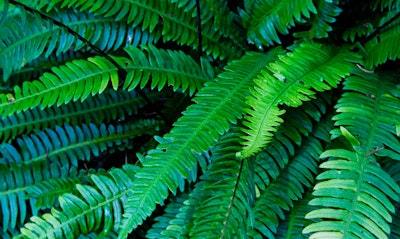
- Deer Fern Blechnum spicant: This glossy two frond, flat spreading fern makes this plant an excellent groundcover. It loves deep shade and adds texture to any garden. Prefers full to partial shade. It is a moderate grower that reaches 8 to 20 inches tall and 24 inches wide.
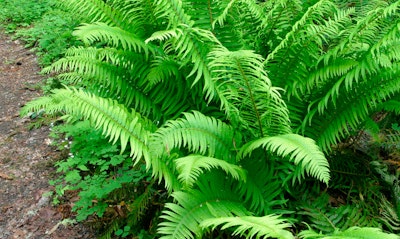
- Western Sword Fern Polystichum minutum: Robust, reliable and maintenance free, this fern can hold up in hot and dry weather and challenging soils. Their deep green, leathery fronds are lovely all year round. Prefers partial to full shade and can grow to 6’ tall by 6’ wide.
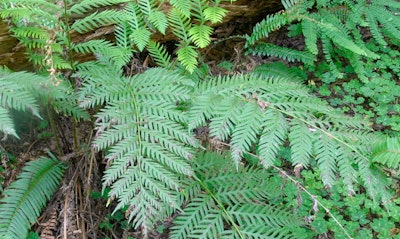
- Giant Chain Fern Woodwardia firmbriata: This is the largest fern in North America. It has long fronds that can reach to 8’ in length and lending to its name, it has a chain shape visible on both sides. Grows 6’ tall and 6’ wide.
Caring For Your California Natives

While relatively fuss free, California Natives do need a bit of attention that differs from most plants
Select the right site
- Understory plants need filtered sun or a shady area
- Plants found in full sun need that exposure to thrive in garden settings
Use Native Soil
- Dig the planting hole and use the soil dug from the hole to plant
- Rocks and soil clods improve drainage; leave them in the mix!
- Be judicious adding compost or planting mix; the excess moisture held can contribute to root rot for natives
Do NOT "tickle" roots
- Take plants from the container and get into the ground straight away
- Resist the temptation to loosen the root ball, as we're accustomed to doing with most transplants
Plant root ball high
- Raise plants up about an inch or slightly higher for larger plants to help improve drainage and increase oxygen to the roots.
- Should the plant settle once watered, add soil under the root ball to raise the plant and prevent pooling water at the crown.
Emulsions Only
- Never use synthetic fertilizers
- Careful with organic fertilizers as well - they can damage or burn natives
- If plants seem stressed, nutrient deprived or have frost damage, use only fish or seaweed emulsion to provide a gentle pick-me-up
Water cautiously
- Water judiciously for root establishment
- Soil should be allowed to dry between waterings
- Over watering leaves the root ball susceptible to root rot
Mulch
- A 1 to 2-inch layer of bark mulch will insulate the roots and protect the soil surface without adversely affecting native plants.
- Keep mulch away from the stem or trunk of the plant

